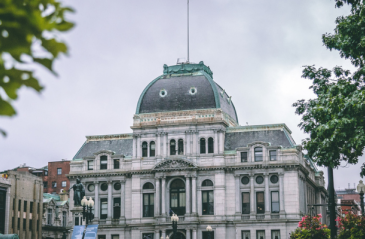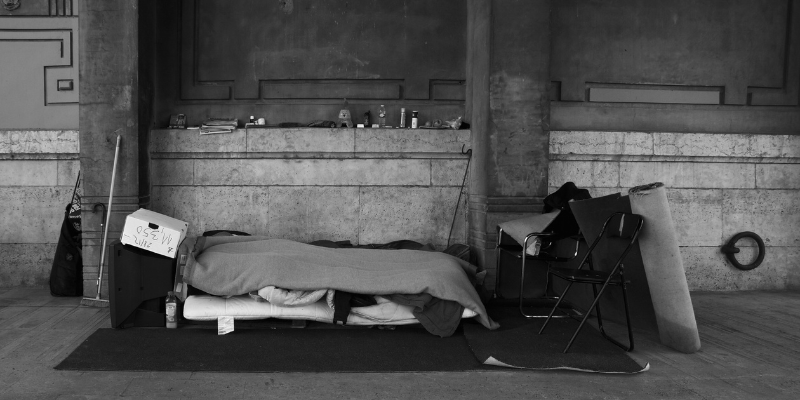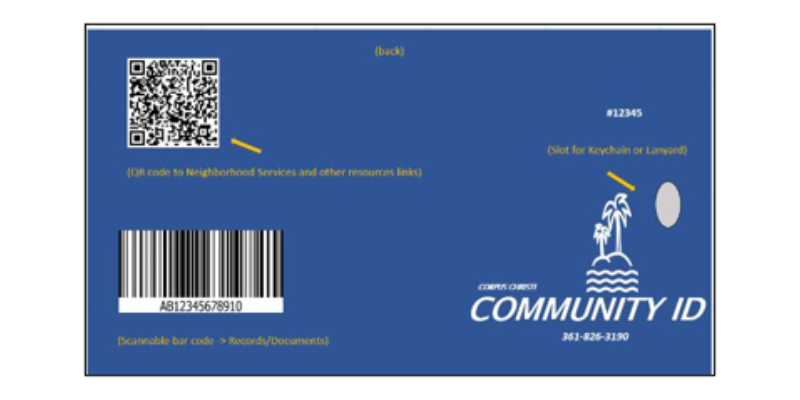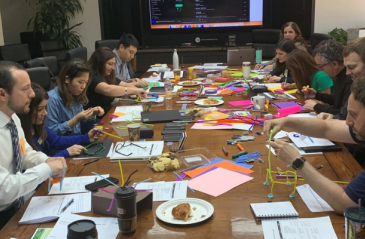
Providence: A City that Works for its Residents


What could go wrong when City Hall colleagues from different departments, with different roles and tenures, are tasked with solving homelessness? Explore what happened when @cityofcc participated in @BHcityleaders.
Share article"Co-designing innovative ways to address complex issues is not linear or simple, and a community built on trust - especially one inclusive of the most vulnerable members of society - requires openness to learning." Keren Costanzo from @cityofcc
Share article.@cityofcc's Keren Costanzo shares 5 key lessons from their experience addressing homelessness as part of @BHcityleaders, exploring both personal and team transformations.
Share articleWe put our vision for government into practice through learning partner projects that align with our values and help reimagine government so that it works for everyone.
From February to December 2022, Corpus Christi participated in the Bloomberg Harvard City Leadership Initiative’s Innovation track. On-the-ground training and curriculum for city teams is delivered by the Bloomberg Center for Public Innovation at Johns Hopkins in partnership with the Centre for Public Impact. The cities that commit to the yearlong Bloomberg Harvard City Leadership Initiative —the flagship executive education program of the Bloomberg Center for Cities at Harvard University —are equipped with new skills and management tools to tackle complex challenges and improve residents' quality of life. Employees participating in the intensive Innovation track build innovation capabilities as they design, test, and prototype solutions to a pressing city problem.

What could go wrong when a dozen City Hall colleagues from different departments, with different roles and tenures within the city, are tasked with solving homelessness? Or what could go right? In truth, the twelve of us were hand-picked by the mayor and city manager due to our high-achieving and goal-oriented nature. So, when we agreed to participate in the Bloomberg Harvard City Leadership Initiative’s Innovation track for the City of Corpus Christi to solve a problem, we were going to solve “the problem.” Or at least what we thought, individually, what the problem was. Therein lies lesson number one: define the problem - together.
Our team was tasked with solving homelessness in the City of Corpus Christi. We were each brought on for our diverse experiences, perspectives, and roles within the city that interacted with homelessness differently. When we reflect on our early meetings, it mirrors the allegory of the blindfolded men, each touching a small portion of an elephant and proclaiming with certainty that they were holding a rope, a tree branch, a pillar, or a handheld fan, based on the small part of the elephant they were experiencing. Though professional colleagues, we had to develop a more personal rapport to innovate together.
To facilitate this process, also known as: “when people stop being strangers and start getting real,” our team worked to design rules of engagement that would guide our interactions and serve as a contract. Though this effort likely spanned just a couple of weeks, as a group of high performers, we were ready to run before we could walk. We were disinterested in all the listening and prepared to move on to the ‘doing’ portion of our work. In hindsight, this groundwork is critical for successful team collaborations. This is lesson number two – develop the ground rules necessary to build a safe space to innovate together.
We were disinterested in all the listening and prepared to move on to the ‘doing’ portion of our work. In hindsight, this groundwork is critical for successful team collaborations.
The intensity of this upfront work breaks down interpersonal barriers by design. There are parallels to the lessons from the Ensemble Leadership model. Our skills create a cacophony when unaligned, but as we adjust to every member’s rhythm and talents, the results are much greater than the sum of the parts. Like a musical ensemble, we had periods of adjustment when team members took new positions elsewhere, new members joined along the way, and people took time to focus on other critical work or personal needs. And here is lesson number three – we are all humans first, and a strong team must be able to bring their whole, authentic, and vulnerable selves to the mission.
Our team’s path to innovation experienced several hiccups until we learned the first three lessons. While other city innovation teams in our cohort reported in our large group session that they recited “trust the process” as a mantra, our group used “slow down to speed up” to describe our lurching momentum more accurately. Our early gravitation towards “doing” resulted in our repeating steps and reiterating the process when we eventually realized we had moved too fast and were not equipped to move to the next step. Lesson four – Even if you can’t trust the process, know that you will eventually have to slow down to speed up.
Our group’s first ‘slow-down’ moment resulted from our realization that we had not sufficiently listened to or observed the people we wanted to help. We were working on a solution for homeless residents but had not put in the effort to work with this community to understand their needs. The iterative framework of the innovation track is designed to accommodate, even encourage, these “Stop, Collaborate, and Listen” (cite: Robert Matthew Van Winkle/Vanilla Ice) pauses and reboots. The resulting ah-ha moment for our team allowed us to more authentically understand and embrace lesson number five – co-design solutions with the communities we seek to serve.
These five lessons set the stage for both personal and team transformations:
Define the problem together
Develop the ground rules necessary to build a safe space to innovate together
A strong team must be able to bring their whole, authentic, and vulnerable selves to the mission
Slow down to speed up
Co-design solutions with the communities you seek to serve
This innovation process was a collective lesson in humility and compassion. Early in the program, we worked together to clear the “Bootstrap trap” of dismissing homelessness as a symptom of personal choices. However, discovering the depth and breadth of the challenges faced by homeless residents was shocking, as was uncovering the grace and resiliency these individuals exhibited under these circumstances.
Our team was forced to reframe our entire understanding of homelessness. One individual we interviewed quoted the most profound Mexican proverb: del arbol caido todos hacen lena, which translates to from the fallen tree everyone makes firewood. This one saying shifted the foundation of our understanding of homelessness and our ability to grasp the challenges our houseless neighbors face.
The more we spoke to unsheltered people, the greater our respect grew for their resourcefulness and perseverance in navigating a world not designed to help them succeed. Consequently, we reframed our vocabulary to replace ‘homelessness’ terminology with ‘unsheltered community members’ and ‘residents experiencing houselessness.’ This captures our intention of communicating understanding, belonging, and community rather than exclusion and otherness. It also represents our objective of internally transforming our mindsets, which we accept as a continuous and ongoing practice.
To move forward, our team set out to build trust through collective action. We came to them, met them where they were, and listened. Actively.
Adopting a different language and committing to practicing empathy did not instantly translate into trusting relationships. To move forward, our team set out to build trust through collective action. We came to them, met them where they were, and listened. Actively.
An early example of the headway we made in building a community of trust occurred during an event sponsored by a local non-profit service provider. An unhoused resident identified one of our attending team members to the event organizers as a member of the City’s Police Department, even though this off-duty officer was dressed in civilian (tie-die t-shirt) clothing. The response: “This is how we move forward; we work together.”
The collaborative momentum continued during another engagement with residents at our Central Library to obtain feedback on a Community ID prototype. Our team presented a conceptual idea rooted in the information provided by unsheltered community members earlier in the process. Bringing those ideas back as a prototype and consulting with them on elements that would make a Community ID work for their needs profoundly affected their trust in our work together. Beyond energetic feedback on ways to make a system like this function, the name “Community ID” communicated the inclusive intention of our team’s work.
 Photo credit: Scott Greene
Photo credit: Scott Greene
Building and nurturing relationships with communities remains an ongoing pursuit for members of the Corpus Christi 2022 Innovation track team. Team members continue to advance the Community ID project with the mayor’s buy-in. The positive experience of building community partnerships and collaborations within this framework has fostered additional efforts across various city- and community-led initiatives. For example, the Central Library is piloting shipping containers to store personal items, allowing unsheltered residents to access the library and its services without worrying about the safety of their personal belongings.
Working together to co-design innovative ways to address complex issues is not a linear or simple process, and a community built on trust - especially one inclusive of the most vulnerable and preyed upon members of our society - requires continuous nurturing and openness to learning. There is no conclusion for those who invested themselves in this process. The Innovation track offered opportunities for personal learning that became exponential when working as part of a team experiencing these individual transformations together. And no transformative process is ever ‘done’. It simply continues to be part of a person’s evolution.






